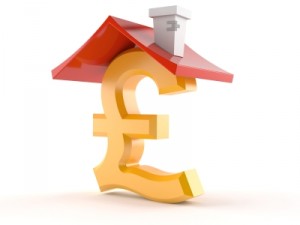David Kingman looks at the latest data from the ONS on house prices
The rise in average house prices is slowing no signs of slowing down, according to the latest data from the Office for National Statistics (ONS). In September 2015, the average home in England was worth a new high of £299,000, the ONS House Price Index showed. Is there any hope for first-time buyers?
Regional variations
As is the always the case with house prices, this national average disguises significant regional variations across both the different countries that make up the UK and different English regions. Unsurprisingly, England has higher average prices than any of the other Home Nations; the average in Northern Ireland, the country with the lowest house prices, is just £162,000, or almost half the English figure. However, the level of variation seen within England is even more dramatic: the average price of a home in each region varies from £158,000 in the North East to an eye-watering £531,000 in London.
Interestingly, when it comes to where house prices have been growing fastest over the past year, Northern Ireland was actually the fastest-growing region with prices increasing by 10.2%, even higher than the rate of growth seen in England (6.4%). House prices in London grew by 7.2%, and there was a general North-South divide in the figures, with prices across the southern regions of England growing at roughly twice the rate of those in the northern regions.
One of the most interesting figures provided by the ONS Index is £218,000 – that’s the average in the remainder of the UK if you remove London and the South East, whereas the average for the whole of the UK if you include them rises to £286,000, or almost 24% higher. As many commentators have observed, London and the South East is effectively a separate country when it comes to house prices – and its young people who pay the biggest price for this, as they particularly want to live in the capital.
Good news for first-time buyers?
Is it all doom and gloom for young people who want to get on the housing ladder? Not necessarily; the one bright spot in the figures for aspiring first-time buyers was that, although average first-time buyers prices grew by 4.3% in the year to September, the rate of increase has been slower during 2015 than it was last year. However, the average first-time buyer price was £216,000 nationally, which means someone would need to have a deposit of over £43,000 saved up (assuming the deposit was 20% of the purchase price), which is surely beyond the reach of many.
Of course, these are just averages, which means around half of first-time buyers paid more than that. The data for first-time buyers also cover the whole of the UK, when we have already seen that there are enormous regional variations, so the typical cost in London is almost certainly far higher.
Any changes on the horizon?
Given how much of an issue the Conservatives have been keen to make of the housing crisis over the last few years, it wouldn’t be surprising if the upcoming Autumn Statement featured some kind of announcement about boosting the supply of housing. Unfortunately, recent news from the development industry hasn’t been terribly encouraging: the relatively novel problem of a shortage of skilled labour to work on building sites has led to house builders slowing down production in markets outside London and the South East, where prices aren’t sufficient to offset higher labour costs.
Of course, the housing crisis would be relatively straightforward to solve if this was the only barrier to building more homes. The bigger problem is surely that so many people who are fortunate enough to own property think they need prices to keep rising, which maintains enormous political and economic pressure for them to do so. Until our economy can become less dependent on housing wealth, expect the prices to carry on rocketing upwards.
